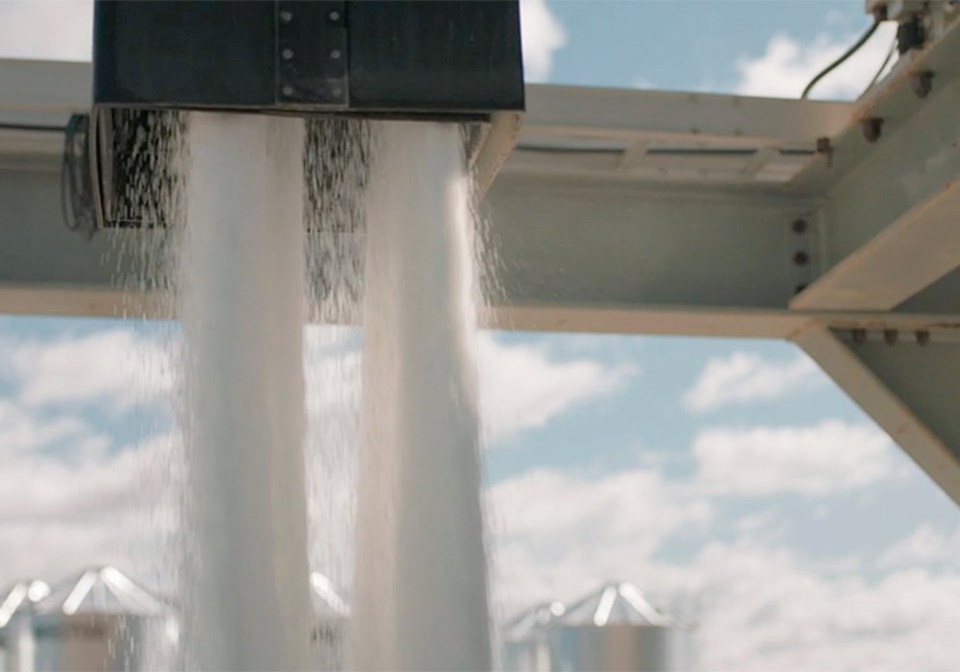WESTERN PRODUCER — The number at the heart of the Canadian government’s fertilizer emissions reduction strategy is iffy at best, says a farm leader.
Ottawa has set a target of reducing emissions by 30 percent from 2020 levels. Those levels were established in Canada’s 2022 National Inventory Report.
The report states that synthetic nitrogen fertilizer used in agriculture was responsible for 13 million tonnes of carbon dioxide equivalent emissions in 2020.
The problem is that number comes with a margin of error of minus 35 percent to plus 40 percent, said Gunter Jochum, president of the Western Canadian Wheat Growers Association.
“What’s really troubling is the number they’re basing (the policy) on,” he said during a webinar hosted by the Macdonald-Laurier Institute.
“It is very fuzzy math that the government is using and it makes it very hard to buy into it.”
In fact, the entire 30 percent reduction the government is seeking could already be contained on the negative side of that expansive margin of error.
Jochum wonders what the motivation is behind the policy initiative.
“It looks like they’re trying to emulate the European model, the Farm-to-Fork model,” he said.
“That is really troubling because it’s not really science-based, it is interest-group-based, it is NGO-based (non-governmental organization) and it leaves the farmers and scientists on the sidelines.”
Alanna Koch, chair of the Global Institute for Food Security, said the European Union’s strategy calling for a 50 percent reduction in pesticides and a 20 percent decrease in fertilizer use by 2030 is “a disaster.”
“I have to think it’s going to fail because they will go hungry,” she said.
The strategy has sparked massive farmer protests in the Netherlands.
Canada’s agriculture minister recently clarified that Canada’s policy will be voluntary and that reducing emissions doesn’t mean reducing fertilizer use.
But Jochum said the government’s own National Inventory Report states that Canadian farmers are already 99.1 percent efficient in their use of the vital crop input.
“How do we get a 30 percent emissions reduction out of that last 0.9 percent?” he said.
Karen Proud, president of Fertilizer Canada, said nitrogen use efficiency on Canada’s farms is among the top in the world.
“Unlike other countries, we don’t have very far to go until we start affecting farmer yields,” she said.
The organization has calculated that the policy would cost a farmer growing 1,000 acres of canola and another 1,000 acres of wheat an estimated $38,000 to $40,000 per year in profits.
She said there was no consultation with farmers, industry, or the provinces prior to the December 2020 release of the government’s discussion paper.
Proud said the industry’s 4R Nutrient Stewardship Program is already greatly reducing emissions.
Farmers are using some level of 4R practices on 25.5 million of Canada’s 90 million acres of farmland.
“Why reinvent the wheel when it’s working?” she said.
Proud said farmers are sophisticated business operators who are not eager to waste expensive crop inputs.
“The government looks at the farmer as the guy in the field with the overalls and the pitchfork,” she said.
“They don’t understand that farmers are businessmen and women.”
Sylvain Charlebois, professor in food distribution and policy at Dalhousie University, said the urban-rural divide is growing wider in Ottawa.
Policy is being devised by climate crusaders and there is no room for dissenting voices.
“Right now, what we have in Ottawa is people thinking farmers should farm their crops like city lawns and farmers should treat livestock like their own pets and that’s not how agriculture works,” he said.
The government appears to be softening its stance. For instance, there was nothing in the original discussion document indicating it was going to be a voluntary policy.
And the government now appears eager to engage in consultation with the agriculture sector.
But Jochum said he has “trust issues” with a government that initially stated the carbon tax would only go as high as $50 per tonne. The new cap is $170 per tonne by 2030.
He worries that the voluntary fertilizer emissions reduction target could eventually become mandatory.
Jochum noted that the recently passed climate legislation in the United States contained nothing about carbon taxes or fertilizer emissions reductions.
“Who are we trying to impress here and what does the government have to gain?” he said.

